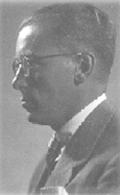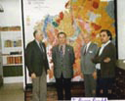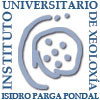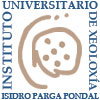Laxe's Geological Laboratory brief history

Laxe's Geological Laboratory is a Galician scientific institution founded by professor Isidro Parga Pondal in 1940. Since then its activity is devoted to the study of Galicia's geology and the Iberian Peninsular Hercínico. This Institution arises after the expulsion of the Professor Parga Pondal from the Santiago de Compostela University where it was in the post ofgeochemistry's professor, for reasons such as its Galician nationalist ideology and the rejection of his companions profesorales to their progressive conception of the University. These events took place in 1936, at the Spanish Civil War start. Since that time the Professor Parga Pondal remade his life and he devoted his free time and finance to the Galician geology study's and the Peninsular Hercínico, taking advantage of the leisure that left him the Company Address Caolines de Lage S.L., based in Laxe's village southwest of A Coruña city.


Until the end of his professional life (his retirement from active life occurs in 1969), Parga Pondal feel the current foundations of modern Galician geology making numerous research and publications between which it emphasizes the Galician Geological Map to the scales of 1:50.000, 1:250.000 and 1:500.000 where correlates, for the first time, the Galician geology with the adjacent areas: Portugal and the rest of Spain. His work is published in 1982 with the edition of the Massif Peninsular Hespérico Geologycal map that presents the geology from the Hespérico in the Iberian Peninsula's western half, fruit of international scientists collaboration from 5 countries (France, Germany, Portugal, Spain and the United Kingdom) and 16 European universities. This great work, coordinated and directed by Isidro Parga Pondal is the fruit of its more than 40 years of research.
Next to his scientific work expressed so evident in his numerous publications is his meritorious work as director of geological investigations in the Iberian Peninsula NW that during 25 years carried out not only to coordinate students or researchers from different European universities (Leiden, Delft, Zurich, Münster, Montpellier, Toulouse, Strasbourg, Nancy, Liverpool, Lisbon, Port, Coimbra, Barcelona, Complutense de Madrid, Oviedo, Salamanca, Santiago de Compostela), which developed their research campaigns in Galicia, but also in the continued collaborations between Laxe's Geological Laboratory work team and many Spanish or Foreign renowned institutions (C.S.I.C., I.G.M.E., I.G.N., B.R.G.M., etc.).


The results of this Laxe's Geological Laboratory first stage were a diverse nature publications series and the achievement of a coordinated work experience from multidisciplinary teams and multinationals which, working together in the same physical space (Galicia) managed to bring it to the first position, in which geological studies refers, the Galician territory. There are two stages in the Geological Galicia Survey it is necessary to point out. One until 1835 when thanks to the work of William Schulz, third Director of the I.G.M.E., Galicia has a geological letter, the most modern of all Spain. The other, between 1936 and 1982, in which, thanks to the work of Professor Parga Pondal just the Plan Magna of I.G.M.E. with the Galicia geological map to scale 1:50.000 that endows Galicia with the degree of more detailed knowledge of the Spanish Geology remained, however, the only autonomous region where there is no Faculty of Geology or studies related with her at the university level.

In 1978, with Jose Ramon Parga Peinador death in traffic accident , Don Isidro Parga Pondal son and continuator of his work, was put at serious risk the survival of the institution, which thanks to Isaac Diaz Pardo support, founder of the Ceramic Factory Sargadelos, will not happen. In effect, in 1979 is applicable to the transfer of the documentary fund, stones Collection, newspaper archive and library from Laxe to the new laboratory's headquarters that is located since then in the factory of Sargadelos in O Castro, Sada (A Coruña), where it is again the structure of your organization and is provided with adequate means and personnal to relaunch their activity, which translates into an activity of publications, scientific meetings and promotion of the geological research that will have its continuity at the University Institute of Geology Isidro Parga Pondal .










